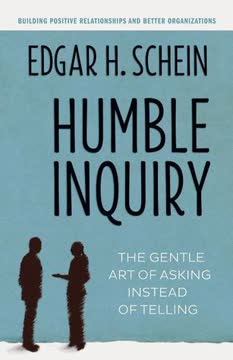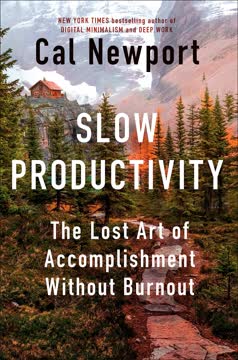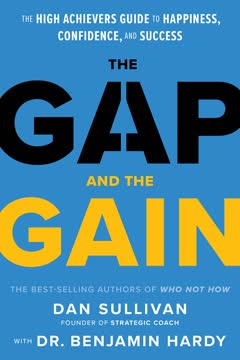نکات کلیدی
1. جهان با سرعتی بیسابقه در حال تغییر است و نیاز به تطبیق مداوم دارد
کندترین نرخ تغییری که در بقیه عمر خود تجربه خواهید کرد ... همین حالا است.
تسریع تغییر. ما در حال تجربه بیشترین سرعت تغییر در تاریخ بشر هستیم که توسط سه "تغییر اقلیمی" در هم تنیده: فناوری، محیط زیست و اقتصاد هدایت میشود. این تحول سریع در حال تغییر شکل دادن به هر جنبهای از زندگی ما است، از نحوه کار و ارتباطات تا نحوه یادگیری و ایجاد ارزش.
ضرورت تطبیق. برای موفقیت در این واقعیت جدید، افراد و سازمانها باید توانایی تطبیق مداوم را توسعه دهند. این به معنای رها کردن ذهنیتهای قدیمی، پذیرش فناوریهای جدید و باز بودن به یادگیری و نوآوری مداوم است. توانایی تطبیق به مزیت کلیدی ما در پیمایش آینده نامشخص تبدیل میشود.
عوامل کلیدی تغییر:
- رشد نمایی در قابلیتهای فناوری
- تغییر هنجارهای فرهنگی و اجتماعی
- جهانیسازی و اقتصادهای به هم پیوسته
- چالشهای زیستمحیطی و نگرانیهای پایداری
2. رها کردن هویتهای شغلی ثابت برای موفقیت در آینده کار
اگر دیگر بانکدار یا وکیل نباشید، چه کسی هستید؟
انعطافپذیری هویتی. وابستگی شدید ما به هویتهای شغلی میتواند توانایی ما را در تطبیق با محیطهای کاری به سرعت در حال تغییر محدود کند. به جای تعریف خود با عناوین شغلی یا نقشهای خاص، باید حس حرفهای سیالتری را بر اساس مهارتها، ارزشها و پتانسیل خود بپذیریم.
بازنگری هویت کاری. بر "چرا" (هدف) و "چگونه" (قابلیتهای منحصر به فرد) خود تمرکز کنید نه فقط "چه" (شغل فعلی). این تغییر در دیدگاه امکان تطبیق بیشتر و باز شدن فرصتهای جدید را فراهم میکند زیرا ماهیت کار تکامل مییابد. با جدا شدن از برچسبهای شغلی سخت، در برابر تغییرات مقاومتر میشویم و بهتر میتوانیم از فرصتهای نوظهور بهرهبرداری کنیم.
مراحل رها کردن هویتهای ثابت:
- شناسایی مهارتهای قابل انتقال و شایستگیهای اصلی
- کاوش در تجربیات و نقشهای متنوع
- پرورش ذهنیت رشد
- پذیرش یادگیری مادامالعمر و توسعه مهارت
3. توسعه ذهنیت یادگیری چابک برای پیمایش تغییرات مداوم
توانایی یادگیری سریعتر از رقبا ممکن است تنها مزیت رقابتی پایدار باشد.
چارچوب یادگیری چابک. ذهنیت یادگیری چابک شامل چهار مؤلفه کلیدی است: عاملیت، چابکی، تطبیقپذیری و آگاهی. این ذهنیت به افراد امکان میدهد مالکیت یادگیری خود را به عهده بگیرند، به سرعت مهارتهای جدید کسب کنند، به شرایط متغیر تطبیق یابند و درک دقیقی از خود و محیط خود داشته باشند.
توسعه مهارت مداوم. در جهانی که نیمهعمر مهارتها به سرعت در حال کاهش است، توانایی یادگیری، فراموشی و یادگیری مجدد بسیار حیاتی میشود. این شامل نه تنها کسب مهارتهای فنی جدید بلکه توسعه قابلیتهای انسانی منحصر به فرد مانند خلاقیت، همدلی و تفکر انتقادی است. سازمانها باید از تمرکز بر دانش ثابت به پرورش فرهنگ یادگیری و تطبیق مداوم تغییر جهت دهند.
عناصر ذهنیت یادگیری چابک:
- عاملیت: مسئولیتپذیری برای یادگیری و رشد خود
- چابکی: کسب و بهکارگیری سریع مهارتها و دانش جدید
- تطبیقپذیری: تطبیق با موقعیتها و چالشهای جدید
- آگاهی: درک خود و زمینه گستردهتر کار و جامعه
4. پذیرش مهارتهای منحصر به فرد انسانی برای تکمیل فناوری پیشرفته
انسانها باید بفهمند چه چیزی قابل محاسبه است. نیازی به درک کد یا برنامهنویسی ندارند، اما باید بفهمند چه چیزی قابل محاسبه است.
همافزایی انسان و فناوری. با پیشرفت هوش مصنوعی و اتوماسیون، ارزشمندترین مهارتها در محیط کار آنهایی خواهند بود که منحصر به فرد انسانی هستند. این مهارتها شامل خلاقیت، همدلی، حل مسئله پیچیده و هوش اجتماعی میشوند. با تمرکز بر توسعه این مهارتها، افراد میتوانند خود را برای کار در کنار و تقویت فناوریهای نوظهور به جای رقابت با آنها آماده کنند.
تعادل بین مهارتهای فنی و انسانی. در حالی که سواد دیجیتال همچنان مهم است، توانایی بهرهبرداری از قابلیتهای منحصر به فرد انسانی در کنار ابزارهای فناوری کلید موفقیت در محیط کار آینده خواهد بود. این به معنای پرورش تعادل بین مهارتهای فنی و مهارتهای نرم است که امکان همکاری مؤثر، نوآوری و رهبری را فراهم میکند.
مهارتهای کلیدی منحصر به فرد انسانی:
- خلاقیت و نوآوری
- همدلی و هوش هیجانی
- تفکر انتقادی و حل مسئله پیچیده
- تطبیقپذیری و مقاومت
- رهبری و همکاری
5. رهبران باید ایمنی روانی و تنوع شناختی را در تیمها تقویت کنند
اگر چیزی میخواهید که رشد کند، تغییر کند، کاوش کند و مرزها را گسترش دهد، در حال حاضر هیچ چیزی در زمینههای هوش مصنوعی وجود ندارد که چنین کاری انجام دهد.
ایمنی روانی. رهبران نقش حیاتی در ایجاد محیطی دارند که در آن اعضای تیم احساس امنیت کنند تا ریسک کنند، ایدهها را به اشتراک بگذارند و اشتباهات را بپذیرند. این ایمنی روانی برای تقویت نوآوری، یادگیری و تطبیق در سازمانها ضروری است. با مدلسازی آسیبپذیری و تشویق به ارتباط باز، رهبران میتوانند اعتماد را بسازند و تیمهای خود را برای عملکرد بهینه توانمند سازند.
تنوع شناختی. تیمهای با عملکرد بالا از دیدگاهها و سبکهای فکری متنوع بهرهمند میشوند. رهبران باید به طور فعال به دنبال تنوع شناختی باشند و آن را ارزشگذاری کنند، با گرد هم آوردن افرادی با پیشینهها، تجربیات و رویکردهای مختلف برای حل مسئله. این تنوع فکری منجر به راهحلهای خلاقانهتر و تصمیمگیری بهتر در محیطهای پیچیده و به سرعت در حال تغییر میشود.
استراتژیهای تقویت ایمنی روانی و تنوع شناختی:
- تشویق به گفتگوی باز و مخالفت سازنده
- جشن گرفتن شکستها به عنوان فرصتهای یادگیری
- ساخت تیمهای متنوع با مهارتها و دیدگاههای مکمل
- ایجاد فرصتهایی برای همکاری بینوظیفهای
- ارائه بازخورد منظم و شناخت برای تفکر نوآورانه
6. فرهنگ و ظرفیت، پایههای سازمانهای تطبیقپذیر هستند
محصولات یادگاری از فرهنگ و شواهد ظرفیت شما هستند.
فرهنگ به عنوان پایه. فرهنگ یک سازمان زمینهای را فراهم میکند که در آن تطبیق و نوآوری میتواند شکوفا شود. فرهنگی قوی و هدفمند که با هدف و ارزشهای شرکت همسو باشد، حس مشترکی از هویت و جهتگیری ایجاد میکند، حتی زمانی که نقشها و وظایف خاص تکامل مییابند. رهبران باید به طور فعال این فرهنگ را از طریق اقدامات و تصمیمات خود شکل دهند و تقویت کنند.
ظرفیت برای تغییر. ظرفیت سازمانی به توانایی پاسخگویی به فرصتها و چالشهای جدید اشاره دارد. این شامل نه تنها داشتن مهارتها و منابع مناسب بلکه ذهنیت و ساختارهایی است که یادگیری و تطبیق سریع را ممکن میسازد. با تمرکز بر ساخت ظرفیت به جای صرفاً قابلیتها، سازمانها میتوانند بهتر عدم قطعیت را پیمایش کنند و از فرصتهای نوظهور بهرهبرداری کنند.
عناصر کلیدی سازمانهای تطبیقپذیر:
- هدف و ارزشهای روشن
- تأکید بر یادگیری و آزمایش مداوم
- ساختارها و فرآیندهای انعطافپذیر
- سرمایهگذاری در توسعه و رفاه کارکنان
- تصمیمگیری مبتنی بر داده و حلقههای بازخورد
7. استخدام برای تطبیقپذیری و همسویی فرهنگی، نه فقط مهارتها و تجربه
ما باید چابکی یادگیری، ذهنیت رشد، تطبیقپذیری را در نظر بگیریم. اینها جنبههایی هستند که باید در نظر بگیریم زیرا نمیخواهم کسی را برای انجام یک کار در دو سال آینده استخدام کنم؛ میخواهم او را برای توانایی انجام پنج کار بعدی در ده سال آینده استخدام کنم و نمیدانم آن کارها چه خواهند بود.
بازنگری در استخدام. شیوههای استخدام سنتی که صرفاً بر مهارتهای خاص و تجربه گذشته تمرکز دارند، در محیط کاری به سرعت در حال تغییر کمتر مرتبط میشوند. در عوض، سازمانها باید اولویت را به کاندیداهایی بدهند که تطبیقپذیری، چابکی یادگیری و همسویی با فرهنگ و ارزشهای شرکت را نشان میدهند.
افزودن فرهنگی، نه فقط تطبیق. در حالی که همسویی فرهنگی مهم است، سازمانها باید به دنبال تنوع فکری و تجربی نیز باشند. مفهوم "افزودن فرهنگی" بر آوردن افرادی تأکید دارد که ارزشهای اصلی را به اشتراک میگذارند اما همچنین دیدگاهها و ایدههای جدیدی را به ارمغان میآورند. این رویکرد به جلوگیری از تفکر گروهی کمک میکند و نوآوری را در سازمان تقویت میکند.
استراتژیهای استخدام تطبیقپذیر:
- ارزیابی چابکی یادگیری و ذهنیت رشد
- جستجوی شواهدی از تطبیقپذیری و مقاومت
- ارزیابی همسویی فرهنگی و پتانسیل برای ارائه دیدگاههای جدید
- استفاده از مصاحبههای مبتنی بر سناریو برای سنجش مهارتهای حل مسئله
- در نظر گرفتن پیشینهها و تجربیات غیرسنتی
8. یادگیری مداوم، مستمری جدید در محیط کار در حال تکامل است
یادگیری به مستمری جدید تبدیل میشود و در طول قوس حرفه شما ارزش میافزاید.
یادگیری به عنوان سرمایهگذاری. در جهانی که مهارتهای خاص به سرعت منسوخ میشوند، یادگیری مداوم برای امنیت شغلی بلندمدت ضروری میشود. همانطور که مستمریها زمانی امنیت مالی برای بازنشستگی فراهم میکردند، توسعه مهارتهای مداوم و تطبیق اکنون اشتغالپذیری و ایجاد ارزش را در طول حرفه فرد تضمین میکند.
مسئولیت مشترک. هم افراد و هم سازمانها باید اولویت را به یادگیری مداوم بدهند. افراد باید مالکیت توسعه خود را به عهده بگیرند و به دنبال فرصتهای جدید برای یادگیری و رشد باشند. سازمانها نیز باید منابع، زمان و مشوقهایی برای یادگیری مداوم فراهم کنند و آن را به عنوان سرمایهگذاری حیاتی در موفقیت آینده خود به رسمیت بشناسند.
رویکردهای یادگیری مداوم:
- پذیرش ذهنیت رشد و کنجکاوی
- جستجوی تجربیات و چالشهای متنوع
- مشارکت در فرصتهای یادگیری رسمی و غیررسمی
- توسعه شبکه یادگیری شخصی
- تمرین تأمل و خودارزیابی
- بهرهگیری از فناوری برای یادگیری درخواستی
آخرین بهروزرسانی::
FAQ
1. What’s The Adaptation Advantage by Heather McGowan about?
- Future of work focus: The book explores how rapid technological, societal, and economic changes are transforming the workplace, emphasizing the need for continuous learning, unlearning, and adaptation.
- Human skills vs. automation: It argues that uniquely human skills—creativity, empathy, judgment, and collaboration—are essential for thriving in an era dominated by automation and AI.
- Practical frameworks: McGowan provides actionable frameworks for individuals and organizations to develop an agile learning mindset and build adaptive cultures.
- Leadership and identity: The book also addresses how leadership and professional identity must evolve to support ongoing adaptation and resilience.
2. Why should I read The Adaptation Advantage by Heather McGowan?
- Guidance for rapid change: The book offers a clear roadmap for navigating the unprecedented speed of technological, cultural, and market shifts.
- Emphasis on lifelong learning: It empowers readers to embrace ambiguity, vulnerability, and continuous reinvention as strengths for career and personal growth.
- Leadership and organizational insights: McGowan equips leaders with tools to foster cultures of psychological safety, cognitive diversity, and continuous learning.
- Relevance for all professionals: The advice is applicable to workers, managers, executives, educators, and students seeking to future-proof their skills and organizations.
3. What are the key takeaways from The Adaptation Advantage by Heather McGowan?
- Adaptability as a superpower: The ability to rapidly learn, unlearn, and adapt is the most sustainable competitive advantage for individuals and organizations.
- Letting go of fixed identity: Clinging to occupational identity limits growth; focusing on purpose and curiosity enables continuous reinvention.
- Agile learning mindset: Agency, agility, adaptability, and awareness are essential for thriving in a dynamic environment.
- Human skills are critical: Creativity, empathy, collaboration, and judgment are irreplaceable by machines and central to future success.
- Shift in organizational focus: Companies must move from scalable efficiency to scalable learning to keep pace with change.
4. What are the most important uniquely human skills highlighted in The Adaptation Advantage by Heather McGowan?
- Individual skills: Design mindset, novel and adaptive thinking, cognitive load management, and sensemaking are emphasized as vital for navigating ambiguity and complexity.
- Collaborative skills: Social intelligence, transdisciplinarity, cross-cultural competency, computational thinking, new media literacy, and virtual collaboration are highlighted.
- Empathy’s central role: Empathy is described as essential for innovation, wellness, and removing friction in high-touch jobs.
- Non-automatable advantage: These skills are difficult for machines to replicate, making them crucial for both human-to-human and human-to-machine collaboration.
5. How does Heather McGowan define and explain the “agile learning mindset” in The Adaptation Advantage?
- Four key components: The agile learning mindset includes agency (ownership of learning), agility (flexibility and responsiveness), adaptability (creating new approaches), and awareness (self and market understanding).
- Learning and unlearning: It stresses the importance of not just acquiring new skills, but also unlearning outdated knowledge and behaviors.
- Enabled by human skills: Social and emotional intelligence, creativity, and collaboration are foundational to this mindset.
- Essential for future work: This mindset is presented as the core enabler for continuous adaptation in a rapidly changing world.
6. What is the Iceberg Model in The Adaptation Advantage by Heather McGowan, and how does it relate to adaptation?
- Three skill layers: The Iceberg Model categorizes skills into explicit (visible), uniquely human (below the surface), and enablers (foundational attributes like mindset and identity).
- Role of enablers: Foundational enablers such as mindset and identity drive how individuals engage with learning and change.
- Agile learning at the base: The model highlights that adaptability, awareness, agency, and results agility are essential for continuous learning.
- Identity’s influence: Core and adaptive identities form the base, shaping openness to change and resilience.
7. How does The Adaptation Advantage by Heather McGowan describe the impact of technology on work and skills?
- Three forces at play: Atomization (breaking jobs into tasks), automation (machines doing predictable work), and augmentation (technology enhancing human abilities) are reshaping jobs.
- Jobs evolve, not vanish: While some tasks are automated, most jobs are transformed, requiring regular upskilling and reskilling.
- Human skills gain value: As routine tasks are automated, creativity, empathy, and judgment become more important.
- Collaboration with technology: Workers must learn to complement technology with uniquely human capabilities.
8. What role does professional identity play in adaptation according to The Adaptation Advantage by Heather McGowan?
- Identity as anchor and barrier: Professional identity provides self-esteem and social signals but can trap individuals in outdated roles.
- Fluid and evolving: Identity formation is ongoing and can be reshaped through narrative and exploration.
- Resilient identity supports learning: A secure, adaptive identity enables vulnerability and openness, which are necessary for continuous learning and reinvention.
- Purpose over job title: Focusing on purpose and passion rather than fixed roles supports adaptability.
9. What leadership practices and advice does Heather McGowan offer in The Adaptation Advantage for the future of work?
- Model vulnerability and trust: Leaders should demonstrate vulnerability, admit mistakes, and build psychological safety to foster innovation.
- Inspire and challenge: Creating a shared vision and encouraging experimentation helps teams embrace change.
- Enable collaboration: Leaders must foster environments where respectful dissent and risk-taking are encouraged.
- Celebrate and recognize: Recognizing contributions and celebrating accomplishments sustains motivation and engagement.
10. How does The Adaptation Advantage by Heather McGowan address organizational culture and capacity for adaptation?
- Culture as foundation: Organizational culture—intentional or accidental—shapes daily work life and adaptability.
- Capacity as organizational brain: Capacity includes mindset, learning agility, and the ability to leverage biases constructively.
- Inputs over outputs: Focusing on culture and capacity (inputs) is more important than just products and services (outputs) for thriving in change.
- Real-world examples: The book contrasts companies like Airbnb (intentional culture) and Uber (accidental culture) to illustrate the impact of culture on adaptability.
11. How does The Adaptation Advantage by Heather McGowan suggest rethinking hiring and building adaptive teams?
- Beyond job descriptions: Traditional job descriptions can limit adaptability; hiring should focus on values alignment and learning agility.
- Five talent types: The book identifies executive producer, transformational, contingent, rotational, and foundational talent as key contributors to adaptability.
- Cognitive diversity and safety: Successful teams combine diverse thinking styles with psychological safety for open idea expression.
- Continuous learning and fluid teams: Teams should embrace failure as a learning opportunity and operate in flexible, purpose-built groups.
12. What are the best quotes from The Adaptation Advantage by Heather McGowan and what do they mean?
- On human growth: “Human beings are works in progress that mistakenly think they're finished.” This underscores the necessity of embracing continuous growth and adaptation.
- On vulnerability: “Vulnerability is the birthplace of innovation, creativity and change.” Vulnerability is reframed as a strength essential for leadership and team trust.
- On learning: “The ability to learn faster than your competitors may be the only sustainable competitive advantage.” This highlights rapid learning as key to success.
- On culture and purpose: “People don't buy what you do, they buy why you do it.” This stresses the importance of purpose-driven culture for organizational success.
- On failure: “Failure is not a bug of learning, it's the feature.” This reframes failure as an essential and positive part of the learning and adaptation process.
نقد و بررسی
کتاب مزیت سازگاری عمدتاً نظرات مثبتی دریافت کرده است و خوانندگان از بینشهای آن در زمینهی هدایت به سوی آیندهی کار قدردانی میکنند. بسیاری از افراد بر تأکید کتاب بر سازگاری، یادگیری مداوم و توسعهی مهارتهای منحصر به فرد انسانی تأکید میکنند. برخی از خوانندگان مفاهیم ارائه شده را تازه و قابل کاربرد یافتند، در حالی که دیگران احساس کردند که مطالب تکراری بوده یا به صنایع خاصی معطوف شده است. انتقادات شامل وابستگی بیش از حد به نمودارها و کمبود نکات عملی برای پیادهسازی است. بهطور کلی، منتقدان این کتاب را برای افرادی که به تحول سازمانی و آمادگی برای محیط کار به سرعت در حال تغییر علاقهمند هستند، توصیه میکنند.
Similar Books














